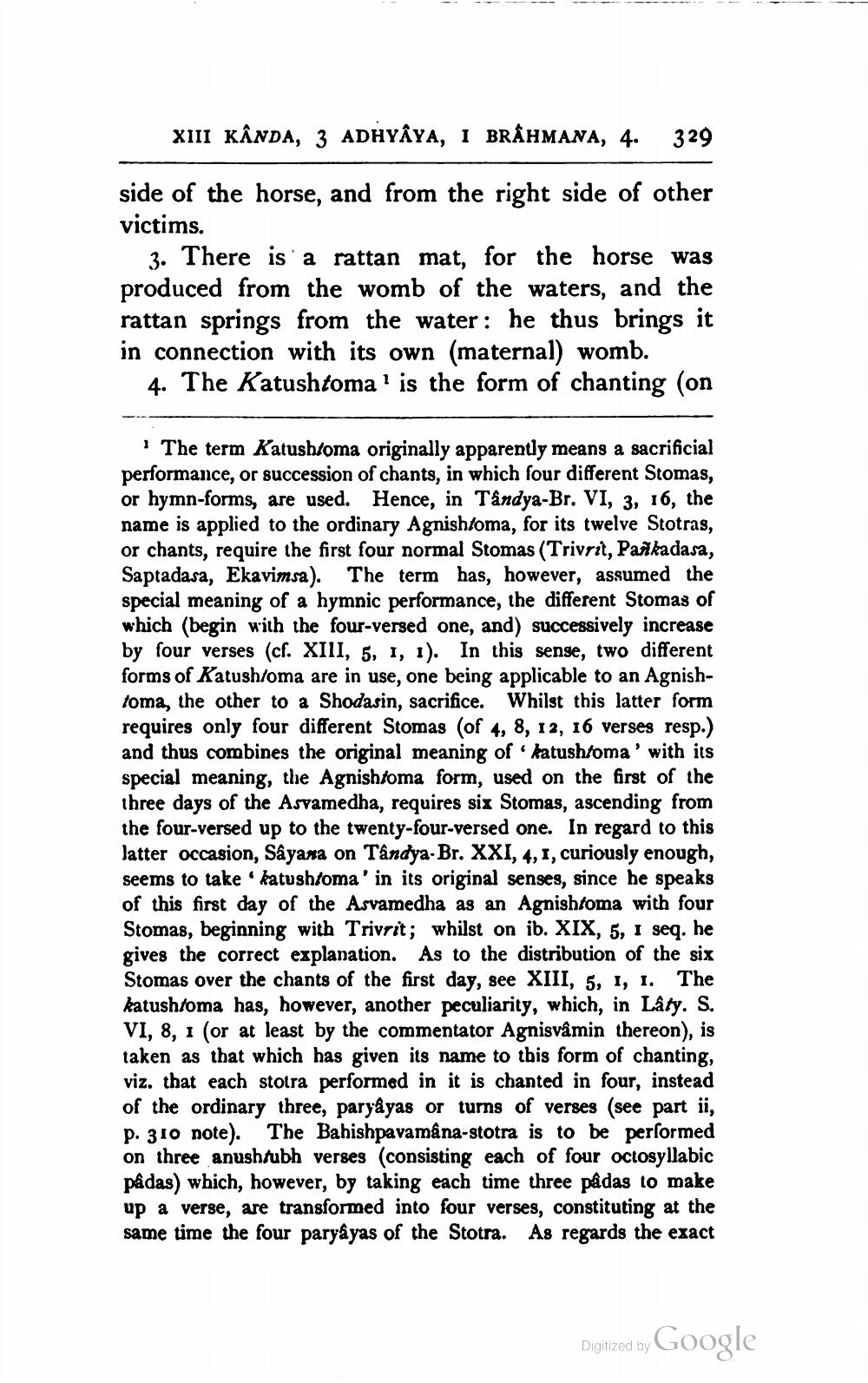________________
XIII KÂNDA, 3 ADHYAYA, I BRÂHMANA, 4. 329
side of the horse, and from the right side of other victims.
3. There is a rattan mat, for the horse was produced from the womb of the waters, and the rattan springs from the water : he thus brings it in connection with its own (maternal) womb.
4. The Katushtoma' is the form of chanting (on
1 The term Katushtoma originally apparently means a sacrificial performance, or succession of chants, in which four different Stomas, or hymn-forms, are used. Hence, in Tandya-Br. VI, 3, 16, the name is applied to the ordinary Agnishtoma, for its twelve Stotras, or chants, require the first four normal Stomas (Trivrit, Parkadasa, Saptadasa, Ekavimsa). The term has, however, assumed the special meaning of a hymnic performance, the different Stomas of which (begin with the four-versed one, and) successively increase by four verses (cf. XIII, 5, 1, 1). In this sense, two different forms of Katush/oma are in use, one being applicable to an Agnishtoma, the other to a Shodasin, sacrifice. Whilst this latter form requires only four different Stomas (of 4, 8, 12, 16 verses resp.) and thus combines the original meaning of katushtoma' with its special meaning, the Agnishtoma form, used on the first of the three days of the Asvamedha, requires six Stomas, ascending from the four-versed up to the twenty-four-versed one. In regard to this latter occasion, Sâyana on Tandya-Br. XXI, 4, 1, curiously enough, seems to take katushtoma' in its original senses, since he speaks of this first day of the Asvamedha as an Agnishtoma with four Stomas, beginning with Trivrit; whilst on ib. XIX, 5, I seq. he gives the correct explanation. As to the distribution of the six Stomas over the chants of the first day, see XIII, 5, 1, 1. The katushtoma has, however, another peculiarity, which, in Laty. S. VI, 8, 1 (or at least by the commentator Agnisvâmin thereon), is taken as that which has given its name to this form of chanting, viz. that each stotra performed in it is chanted in four, instead of the ordinary three, paryayas or turns of verses (see part ii, p. 310 note). The Bahishpavamâna-stotra is to be performed on three anushtubh verses (consisting each of four octosyllabic pâdas) which, however, by taking each time three pâdas to make up a verse, are transformed into four verses, constituting at the same time the four paryâyas of the Stotra. As regards the exact
Digitized by Google




